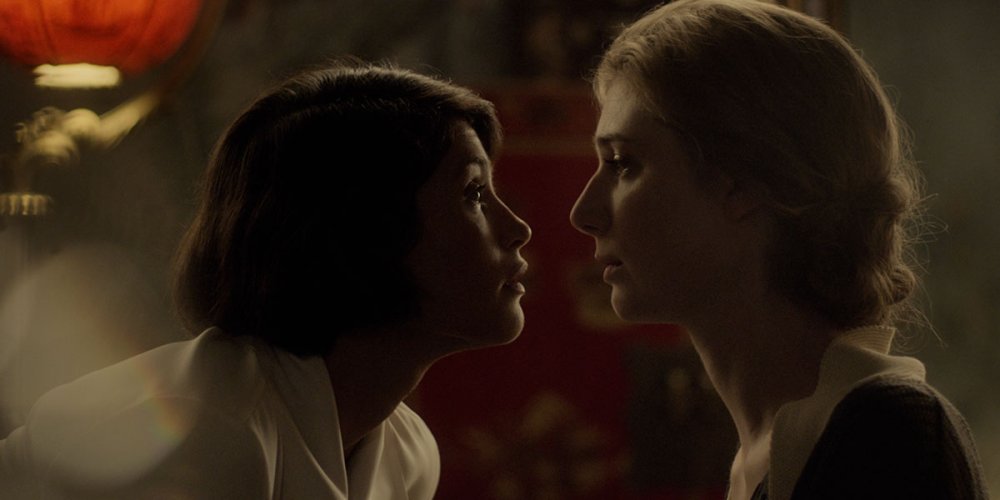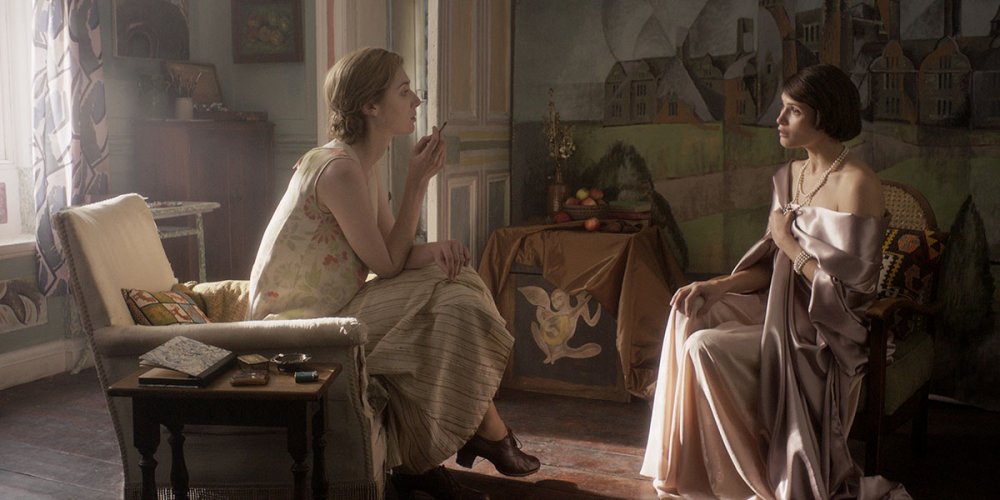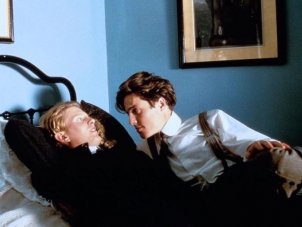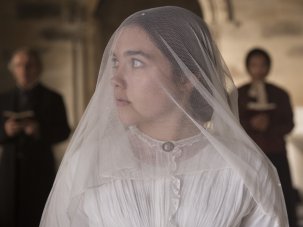Vita Sackville-West (Gemma Arterton) and Virginia Woolf (Elizabeth Debicki) meet at a house party. Thumping electronic music is playing while liquored-up, costumed guests throw themselves around the dance floor. One of these dancers is Virginia, twirling her arms around as if she’s at Glastonbury. A flower crown wouldn’t be out of place. Vita & Virginia might play out over the 1920s, but it’s a scene that could easily slot into a film set today.
UK/Ireland 2018
110 mins
Director Chanya Button
Cast
Virginia Woolf Elizabeth Debicki
Vita Sackville-West Gemma Arterton
Sir Harold Nicolson Rupert Penry-Jones
Baroness Sackville Isabella Rossellini
Vanessa Bell Emerald Fennell
Leonard Woolf Peter Ferdinando
Ralph Nathan Stewart-Jarrett
Duncan Grant Adam Gillen
Nigel Sackville-West Sam Hardy
Vita and Virginia tries to make the past modern. Director Chanya Button has chosen to tell the story of how Sackville-West and Woolf met and fall in love in a stylish, glossy fashion. Despite their historical accuracy, the costumes have a contemporary feel to them as Vita wears shocking pink leopard print suits and purple lipstick. Mostly, it’s the music that does the heavy lifting in injecting a shot of the modern into the period film. Thudding bass gives Vita and Virginia’s opening a pulsing sense of urgency that unfortunately starts to peter out as the film becomes dragged down in exposition and explanation of characters’ every motivation.
The women’s courtship is told through letters as Virginia or Vita take turns facing the camera front-on and deliver them as monologues. It’s hardly a radical approach to handling film’s common challenge of how to relay writing. It also speaks to Vita and Virginia’s main problem. The film’s script is generally stagey – hardly surprising as much of the dialogue has been lifted from real life letters and placed into characters’ mouths, a transplant that makes it near impossible for actors to give a natural delivery.

As Sackville-West, Arterton is utterly charming: flirtatious one moment, infuriating the next. Debicki’s Woolf veers towards cliché and her portrayal of Woolf’s mental health doesn’t go beyond a widening of the eyes and erratic bodily contortions. The rest of the Bloomsbury gang are fine as two-dimensional bohemians whose main function is to encourage Virginia to tell the audience her feels about Vita.
Vita & Virginia focuses on the women’s craft as well as their relationship, although Vita is rather short-changed in that department. Screenwriters Button and Eileen Atkins do their best to convey just how radical Woolf’s writing was and still is through fantasy sequences that play out in Virginia’s head where ivy grows out of wooden floors. It’s an attempt to visually depict how Woolf saw the world – its past, present and future existing simultaneously – yet the film never delves beneath such surfaces. Indeed, the film’s major issue is one of style over substance. While it looks and sounds contemporary, its ideas aren’t particularly. Even the queer relationship between the women – the thing that should make Vita and Virginia feel the most contemporary – never gets off the ground. The lack of depth is a shame because the film is attempting to do something new with the period film, and on a surface level nearly manages to achieves it.
-
The Digital Edition and Archive quick link
Log in here to your digital edition and archive subscription, take a look at the packages on offer and buy a subscription.








